
Test drive Ford Mustang
A high hood with a rounded edge, smooth shapes without sharp corners and edges - everything in the new Ford Mustang is subject to modern pedestrian protection requirements, including European ones. Now Mustang will be sold not only in the USA ...
A high hood with a rounded edge, smooth shapes without sharp corners and edges - everything in the new Ford Mustang is subject to modern requirements for pedestrian protection, including European ones. Now Mustang will be sold not only in the US, but also in the Old World. Ford arranged a presentation of the new muscle car in the very heart of Europe - we flew to Munich to get acquainted with one of the main symbols of America.
The key epithet in the description of the sixth generation Ford Mustang can be the word “for the first time”. Judge for yourself: the sixth generation Mustang has officially arrived in Europe for the first time in the history of the model, it has a supercharged engine for the first time, and for the first time it has acquired a fully independent rear suspension.
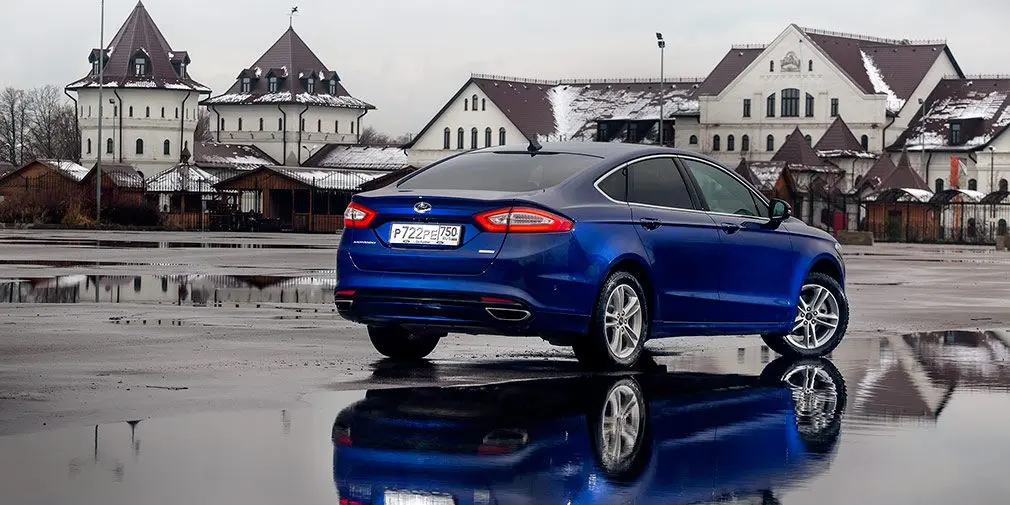
In the sixth generation car, the American legend is still easily and unmistakably read. The silhouette, proportions, and even three LED bulbs in the head optics, similar to the stampings on the face of the first Mustang of 1965, refer to the classic predecessor.
First you need to turn the massive handle on the edge of the windshield. Then press and hold the key next to it. A dozen seconds later, the soft three-piece convertible top folds behind the back of the rear sofa. At the same time, the folded roof is not covered by anything. There is no windscreen here either - the design is as simple as possible. But there are advantages to this as well. For example, the volume of the trunk from the position of the roof does not change. In addition, such simple solutions allow you to keep the price of the car within the bounds of decency. After all, Mustang is still one of the most affordable sports cars. For example, the price in the US starts at $23, while in Germany it starts at €800.
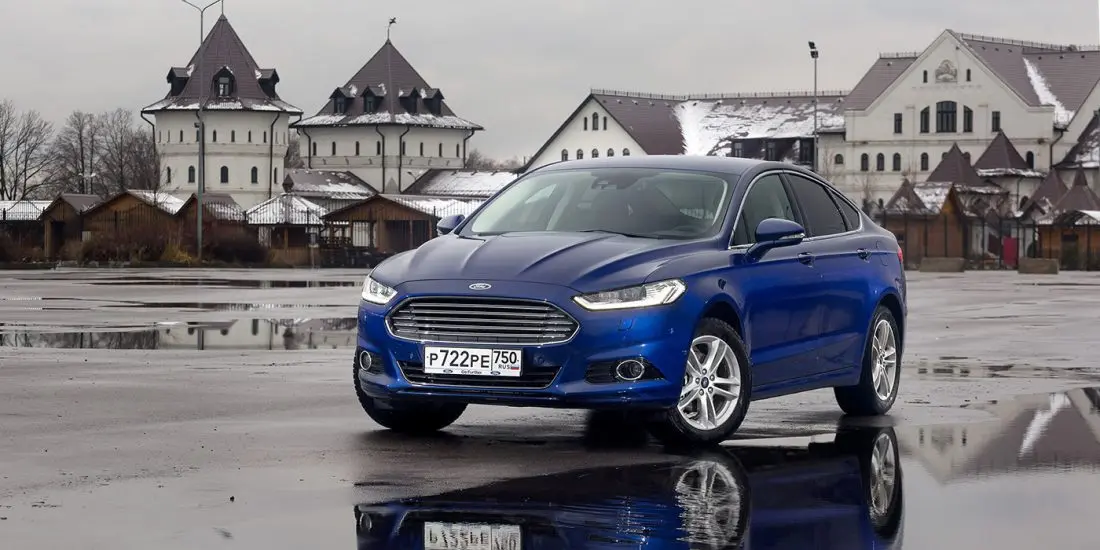
At the same time, much less trifles remind of an attractive price in the interior. The stylish front panel, of course, is not finished with either wood or carbon, but the plastic is very decent. There was also a place for design delights like keys made in the style of aviation toggle switches. Only the climate control unit is not very convenient. By the way, a two-zone air conditioner is standard equipment even for the basic version.
Under the hood of the convertible we tested first is a new 2,3-liter EcoBoost turbo engine with 317 horsepower. The engine is paired with a six-speed manual transmission from Getrag. As an alternative, a six-band "automatic" is also available, but only versions with a manual gearbox were on the test.

Despite its modest engine size, the Mustang accelerates convincingly. Passport acceleration to "hundreds" in 5,8 s is not just a figure on paper, but quite a thrill driving sensations. At the very bottom there is a small turbo lag, but as soon as the crankshaft rpm exceeds 2000, the engine opens. The quiet puffing of the turbine begins to drown out the rolling roar of the exhaust system, and from the spurt it presses into the seat. EcoBoost does not fade after 4000-5000 rpm, but generously endows with power until the very cutoff.
On the go, the Mustang is pretty self-explanatory. The convertible reacts vividly to the actions of the steering wheel and quite accurately follows it. And on steep arcs it holds up to the last, and if it breaks into a skid, it does it quite gently and predictably. The continuous bridge was replaced by a completely independent multi-link. At the same time, the convertible is comfortable, since the dampers are not clamped to the limit. But there is a downside: body roll and pitching are far from exemplary for a sports convertible.
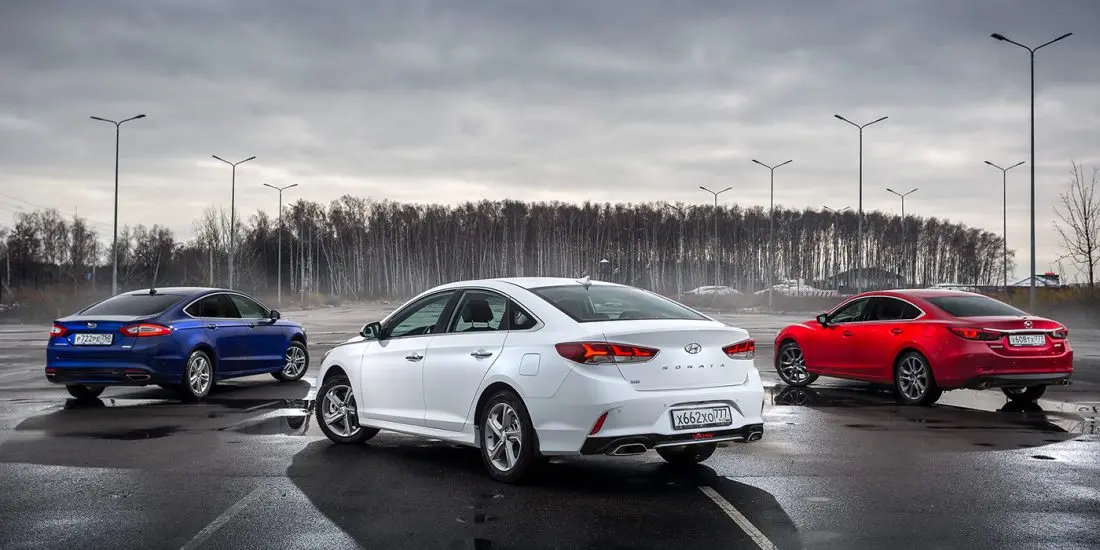
Fastback is perceived differently, especially with the GT index. Under the hood is an old-school atmospheric "eight" with a volume of five liters. Recoil - 421 hp and 530 Nm of torque. Acceleration to “hundreds” in just 4,8 s. - adrenaline in its purest form. Add to that the special Performance Package, which is standard on all Mustang coupes for Europe.
Unlike the standard versions, there are stiffer springs, shock absorbers and anti-roll bars, as well as a self-block and more powerful Brembo brakes. As a result, the GT coupe can drive in such a way that other thoroughbred sports cars from Europe can envy it. But you need to understand that the price of such a car goes far beyond the base price of 35 euros. And then the client will already think, does he really need the Mustang? On the other hand, those who want and can touch the legend think about money last.

The first generation (1964-1973)

The first Mustang left the assembly line on March 9, 1964, and by the end of that year, 263 cars had been sold. The appearance of the car was considered very successful for its time, although unconventional for America. The base engine was the well-known US inline-six from the Ford Falcon, with displacement increased to 434 cubic inches (170 liters). It was aggregated by three-speed mechanics or two- or three-stage "automatic machines". By 2,8, the Mustang had added length and height, with most body panels undergoing a transformation.
By 1969, the Mustang underwent a second modernization and was produced in this form until 1971, after which the coupe grew in size and became heavier by almost 100 pounds (~ 50 kilograms). In this form, the car lasted on the assembly line until 1974.
The second generation (1974-1978)
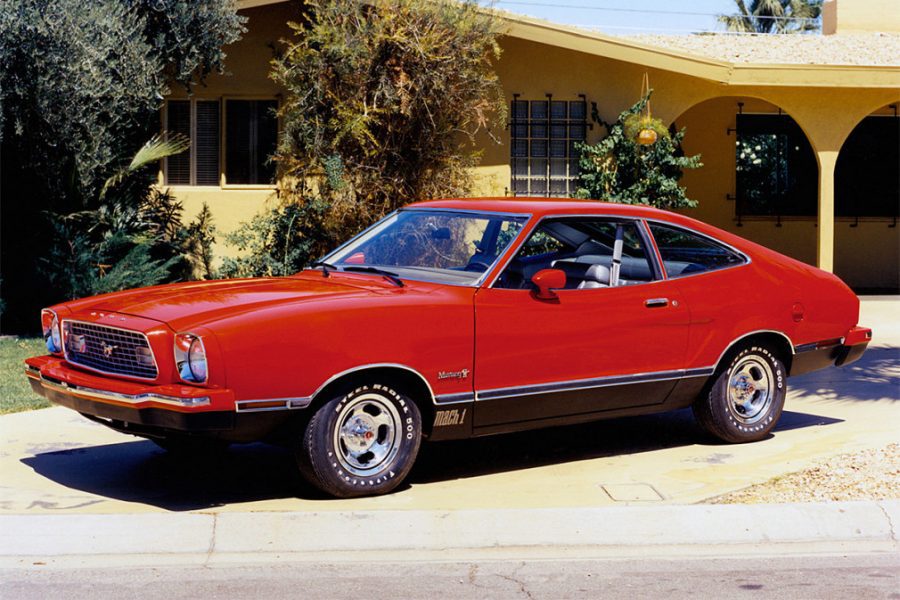
The second-generation Mustang heralded a re-conceptualization of the car in the face of the gas crisis and changing consumer tastes. Structurally, the car was close to European models: it had a spring rear suspension, rack and pinion steering, a four-cylinder engine and a four-speed manual gearbox. Despite the dramatic change of image, Mustang II turned out to be one of the best-selling models in the history of the model. During the first four years of production, about 400 vehicles were sold each year.
The third generation (1979-1993)

In 1979, the third generation of the Mustang appeared. The technical basis of the car was the Fox Platform, on the basis of which the Ford Fairmont and Mercury Zephyr compacts had already been created by that time. Externally and in size, the car resembled the European Fords of those years - the Sierra and Scorpio models. The base engines were also European, but unlike these models, the Mustang was still equipped with a V8 engine in the top versions. The car underwent a serious restyling only in 1987. In this form, the muscle car lasted on the assembly line until 1993.
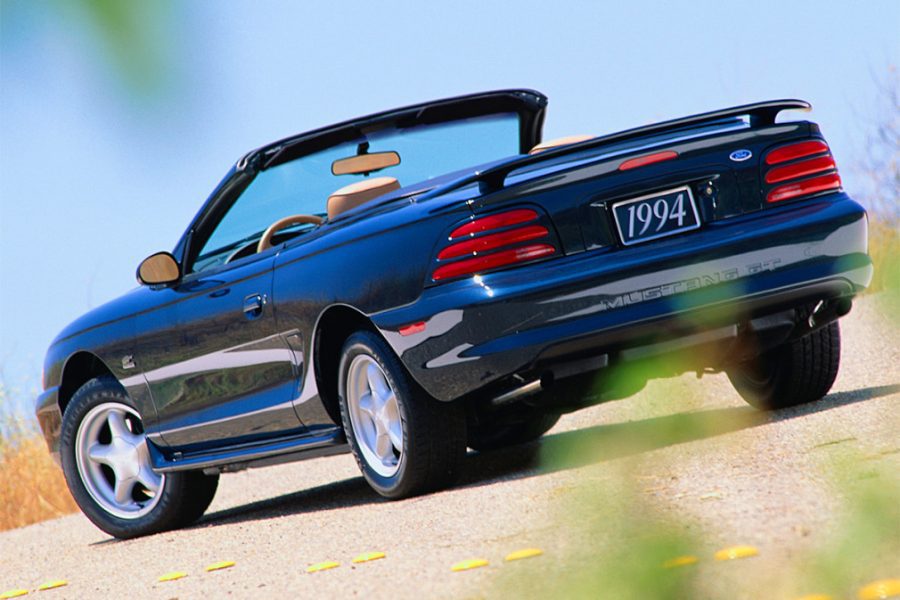
In 1194, the 95th generation of the Muscle Car appeared. The body, indexed SN-4, was based on the new Fox-4,6 rear-wheel drive platform. Under the hood were both "fours" and "sixes", and the top engine was a 8-liter V225 with a return of 1999 horsepower. In 4,6, the model was updated according to Ford's new New Edge design concept. Power modification GT with a 260-liter "eight" was increased to XNUMX horsepower.
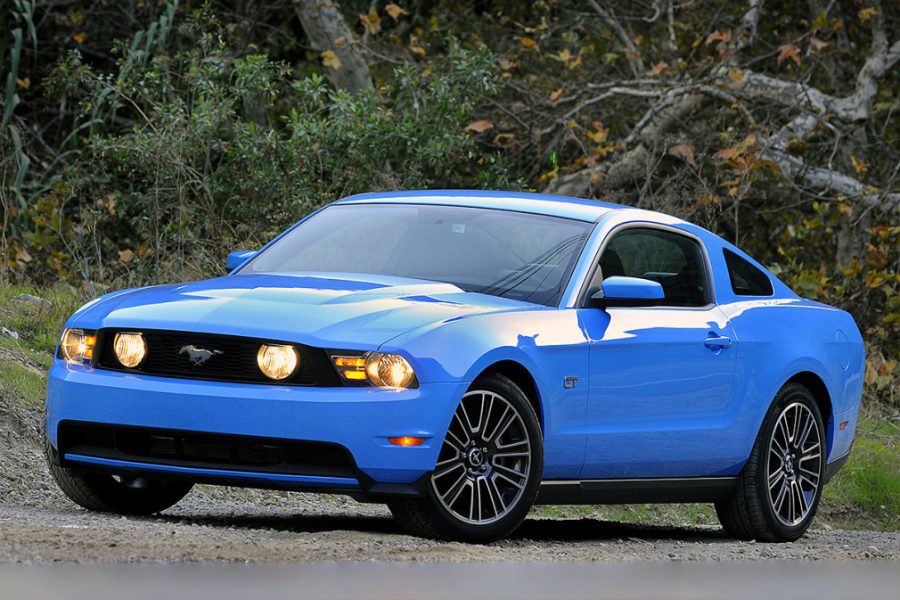
The fifth generation Mustang debuted at the 2004 Detroit Auto Show. The design was inspired by the classic first-generation model, and the rear axle reappeared with a continuous axle. V-shaped “sixes” and “eights” were installed under the hood, which were combined with a five-speed mechanics or a five-band “automatic”. In 2010, the car went through a deep modernization, during which not only the exterior was updated, but also the technical stuffing.

